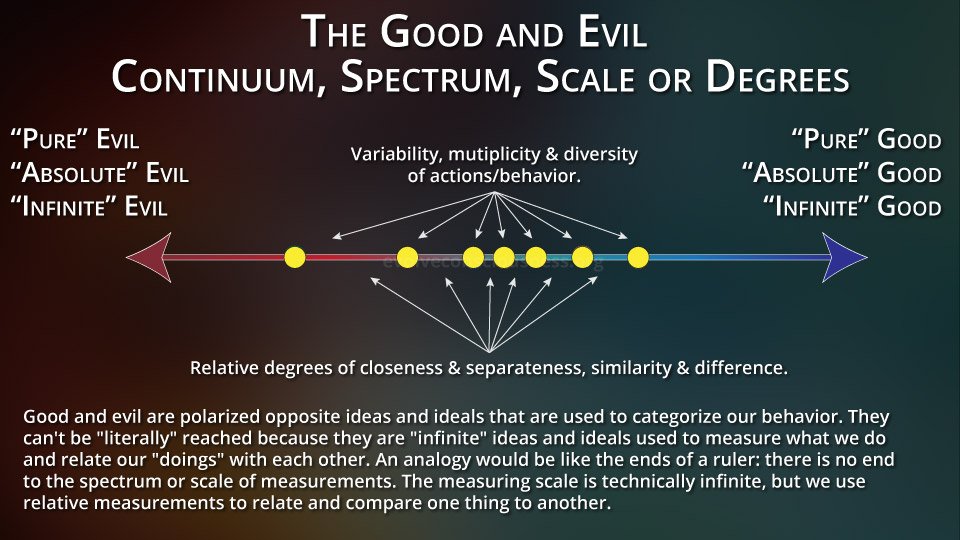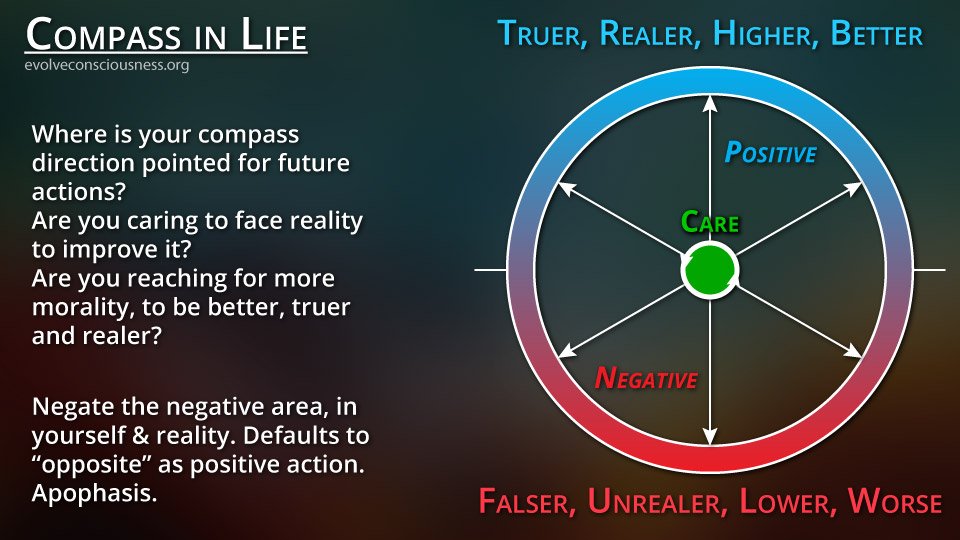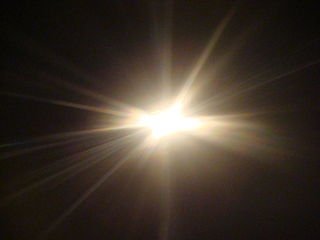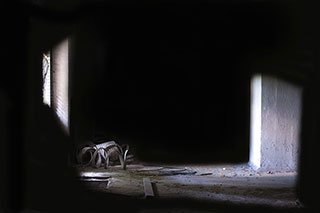Lights is something. Darkness is nothing. Darkness is the absence of that which 'is', light.
Does this description apply to good and evil? Can we simply apply an analogy from one framework (light/dark) to another (good/evil), blindly? No, we can't. We need to verify if the correspondence is actually there in reality. That's how we will attain the truth about how a conceptual framework can actually make sense to apply in reality or in our lives.
Is evil the absence of good? No. You can have the absence of active good being created, and still have no evil. Neutral is not evil, making it by default lean towards the polarity of good. So here, trying to apply the "law of correspondence" fails. Blindly corresponding things does not give us a more accurate understanding. In this case of good and evil the reverse correspondence applies. Good is the absence of evil.
Darkness is the default and light is what actively exists (atomic/molecular forces and reactions to emit light). But in good and evil, good is the default, yet both good and evil can be actively created to exist (behavioral forces). Frameworks might appear similar in some respects and have some valid correspondences, but they aren't a perfect 1:1 correspondence in all ways.
There is also looking at the absolute, pure or perfect polarities in the dualistic conceptual frameworks. To imagine only having absolute light everywhere, there would need to be no darkness existing anywhere. To imagine only having absolute, pure or infinite good everywhere, there would be the nonexistence of evil.
While the former is likely impossible, the latter is possible. Absolute saturation of light is impossible or unfavorable at least, since we would be blind, nothing would have breaks from light, would plants even grow? no more life... not better than pure darkness in the end. Saturation of good is possible because we can potentially stop creating wrongs towards others and no longer create evil into existence. Here is yet again where the blind correspondence from light/dark to good/evil would create a misconception and confusion about the framework of good and evil as it actually applies.

All dualities present oppositional poles as a contrast for us to measure thing against. Dualistic conceptual frameworks are ways in which we can see if something in our lives -- or in reality, or in our imagination -- applies more towards the similarity of one pole, or differs more and relate towards the other more. The framework is a scale or spectrum to apply varying degrees of measurements.
We need the contrast of light and dark for us to see the difference between the many multiplicity, variability and diversity of what exists in existence, reality, and the universe. This is how we determine what is true about existence, because we can identify it.
However, good and evil don't need to exist as a contrast in existence for us to know the difference between good and evil. We can identify many types of behavior in our mind's eye,in the light of our minds, in the "multiverse" of our internal subjective existence in imagination, without creating that behavior in the light of external objective existence, the universe. Evil does not need to exist for us to know the good, or to not create evil and let the default neutral and active good deeds be all that exists. This is another difference in how aspects of light and dark don't simply apply to good and evil.
The contrast between the existence and presence of light and dark shows the differences in the multiplicity, variability and diversity of what is in existence, and yes this also applies to good and evil. But, while light and dark are required as a contrast for us to gain knowledge of the things in existence, good and evil are not required together in existence to provide us with the contrast in knowing the difference between how certain behavior is good or evil.
We can see that difference in the contrast envisioned through the light of our mind's eye. We don't have to engage in certain actions to understand the contrast they provide. We can learn from our own mistakes, those of others, or even create fictional representations in reality (movies, TV, books) or in our minds (imagination) that create representations of the difference between good and evil. We can reflectively think about our actions and behavior beforehand, rather than after we engage in them.
Another error people make is in stating that "evil does not exist, only good exists, evil is the absence of good". I did say that earlier, but that's only true in the ideal idea of an absolute pure good world, which may be possible, but currently isn't the reality. Currently, evil does exist, because we are engaging in certain actions and behaviors that are create negative manifestations for ourselves and others on the planet.
Evil only exist because we create it into existence and can asses, evaluate, diagnose, discern, differentiate and judge the difference between other things we create into existence with our actions. To say that evil doesn't exist is a fallacy of erroneous thinking, or at least an error in not expressing the meaning properly.
The nonexistence of darkness applies by default in reality, light is what exists to bring contrast. But evil is only nonexistent if we don't create it into existence, however we can still know the contrast in knowledge of the difference between good and evil even if we don't create, generate or manifest it with out actions.
You do not need evil in existence. So what if there is only good manifesting through human actions? I don't care if there is no contrast with good and evil existing in my life or other's lives. The only contrast that needs to exist in good and evil is the contrast in knowledge of good and evil. The contrast between light and dark need to exist for us to live, while the contrast of good and evil needing to exist -- or evil needing to exist to show us what good is -- for us to live is a fallacy. It only needs to exist in the internal subjective consciousness and as knowledge for us to share (recounts of past wrongs, creating new fictional simulations, but no new occurrences are required).
We can learn of what is evil, to know the difference between right and wrong, and then choose to not do it (apophatic way). When we recognize the wrong thing to do and don't do it, we automatically default to the opposite of a negative action, which is at the very least a neutral action, if not a positive action.

Turning from the wrongs and evil ways is how we build a solid foundation. Even if we don't do any active good deeds, the base foundation needs to be without cracks of active evil deeds -- either done with our knowledge or ignorance matters not for the construction of ourselves and lives. We're still building based on our actions, ignorance is no excuse. That's why learning how to think (Trivium Method) is important so that we can figure out what is right and wrong, good and evil, and choose to not keep walking on the negative path.
Thank you for your time and attention. Peace.
If you appreciate and value the content, please consider:
Upvoting  , Sharing
, Sharing  or Reblogging
or Reblogging  below.
below.
Please consider supporting me as a Steem Witness by voting for me at the bottom of the Witness page; or just click on the upvote button if I am in the top 50



